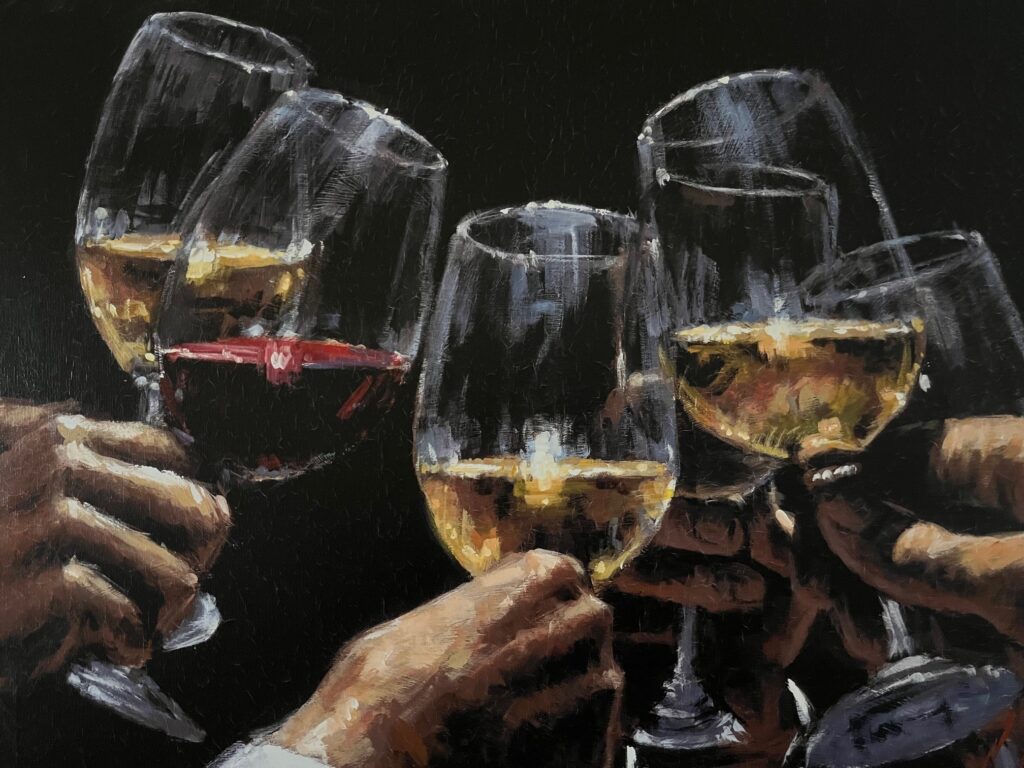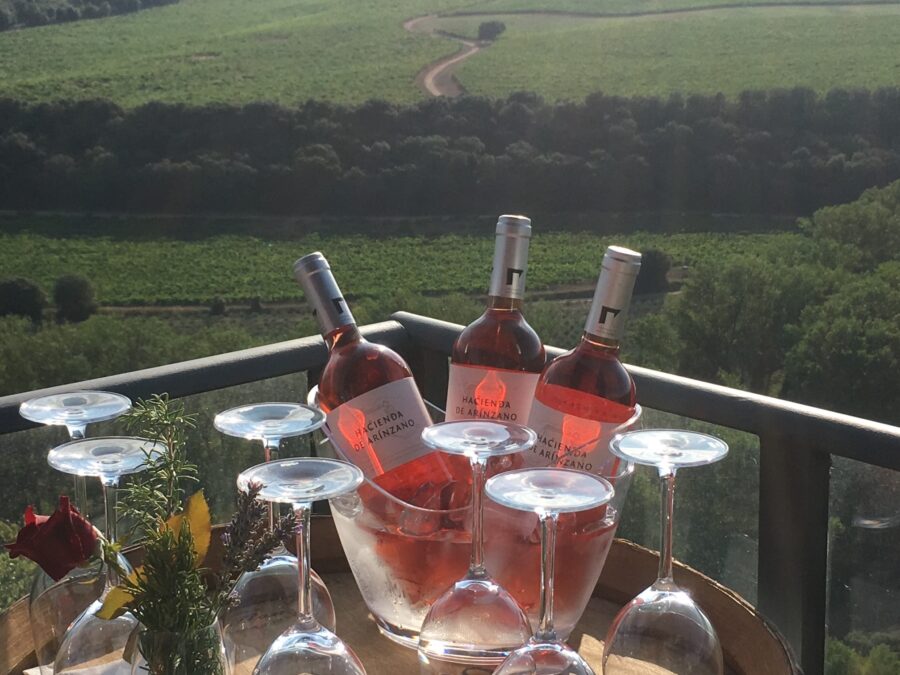Have you ever swirled a glass of wine and wondered what exactly you were supposed to be noticing—besides not spilling it? Whether you’re just starting your wine journey or have a few tastings under your belt, learning how to evaluate wine like a pro can deepen your appreciation and boost your confidence.
Tasting wine isn’t just about identifying flavors—it’s about unlocking the story in your glass. Each swirl, sniff, and sip reveals something about where the wine comes from, how it was made, and what makes it special.
This method isn’t about snobbery or memorizing obscure wine terms—it’s a practical, step-by-step guide to understanding what’s in your glass. In this post, we’ll break down essential wine tasting tips inspired by my Wine and Spirit Education Trust training, giving you the tools to taste more thoughtfully, describe wines accurately, and even spot quality with greater ease. Whether you’re sipping at home or tasting at a vineyard, this guide will help you make the most of every pour.
🍷 WINE TASTING TIPS
1. Set Up for Success
- Use standard tasting glasses or standard tulip-shaped glasses.
- Size: Approximately 215 mm (8.5 inches) tall with a capacity of about 210 ml (7 oz)
- Shape:
- Tulip-shaped bowl that narrows at the rim
- Designed to concentrate aromas toward the nose
- Stemmed: So you can hold the glass without warming the wine
- Clear, colorless crystal: So it doesn’t distort the appearance of the wine
- Taste in a neutral environment – avoid strong odors, colored lighting, and distractions.
- Have a white background for examining color (a sheet of paper works well).
- Spit or pace yourself – essential if tasting multiple wines.
2. The SAT (Systematic Approach to Tasting): LOOK – SMELL – TASTE
The SAT helps tasters avoid vague or subjective descriptions, Build olfactory vocabulary and tasting memory, Compare wines more accurately, Spot quality and faults, and better understand style, grape variety, and winemaking impact
👁️ Appearance
- Clarity: Should be clear (cloudiness may signal a fault).
- Intensity: Pale, medium, or deep?
- Color:
- White: Lemon, gold, amber
- Rosé: Pink, salmon, orange
- Red: Purple, ruby, garnet, tawny
✨ Tip: Swirl the wine gently to assess viscosity (“legs” or “tears” indicate alcohol or sugar).
👃 Nose (Aroma)
- Condition: Clean or unclean? (Check for faults like cork taint, oxidation, or sulfur).
- Intensity: Light, medium, pronounced?
- Aroma characteristics:
- Primary: Fruit (e.g., citrus, stone fruit, black fruits), floral, herbaceous
- Secondary: From winemaking (e.g., yeast, butter, oak)
- Tertiary: From aging (e.g., dried fruit, nuts, leather, earth)
✨ Tip: Take short sniffs first, then longer ones. Don’t overdo it—you can fatigue your nose.
👅 Palate
- Sweetness: Dry, off-dry, medium-sweet, sweet
- Acidity: Mouthwatering sensation—makes wine feel fresh
- Tannin: (for reds) – astringency felt on the gums and teeth
- Alcohol: Warmth in the throat
- Body: Light, medium, or full (relates to texture and mouthfeel)
- Flavor intensity: How strong are the flavors?
- Flavor characteristics: Mirror aroma profile; note if there are any differences
- Finish: How long do the flavors last? Short, medium, or long?
✨ Tip: Swirl the wine in your mouth to coat your palate and expose it to all taste receptors.
3. Making Judgments
- Balance: Are sweetness, acidity, tannin, and alcohol in harmony?
- Length: Is the finish satisfying and complex?
- Intensity & Complexity: More layers and distinctive notes = higher quality
- Expression: Does the wine reflect its grape variety and origin well?
✨ Tip: Practice comparing wines side-by-side to train your palate on differences in quality and style.
4. Extra Tasting Tips
- Taste blind occasionally – removes bias and builds objectivity.
- Keep a tasting journal – note aromas, structure, and personal preferences.
- Pair with food mindfully – observe how acidity, sweetness, and tannins interact with dishes.
5. Developing Your Palate
Smell ingredients in your kitchen or buy an aroma kit.
Taste a wide range of wines – same grape, different regions or styles.
Join tastings or wine clubs – more exposure = faster learning

Tasting wine isn’t just about identifying flavors—it’s about unlocking the story in your glass. Each swirl, sniff, and sip reveals something about where the wine comes from, how it was made, and what makes it special. By learning to taste systematically, like WSET teaches, you’re not just drinking wine—you’re engaging with it.
The beauty of the Systematic Approach to Tasting (SAT) is its structure. It transforms wine from a guessing game into a sensory exploration, helping you move beyond “I like it” to why you like it. That shift deepens your appreciation and gives you language to communicate your preferences, making wine buying, pairing, and sharing infinitely more enjoyable.
🔍 Breaking Down the SAT: A Skill, Not a Script
👁️ Look Closer
Color isn’t just pretty—it’s a clue. A deep purple hue might hint at a young, bold Shiraz, while a pale lemon color could point toward a crisp, zesty Sauvignon Blanc. Even the legs (those streaks on the glass) can whisper about the wine’s alcohol or sweetness levels. Take a second to really see your wine—it’s the first step in understanding it.
👃 Smell with Intention
The nose of a wine is often its most expressive feature. It’s where you detect fruit, flowers, spices, and even signs of winemaking like oak or bottle age. Start by asking: Is it fruity or earthy? Subtle or powerful? With practice, you’ll start noticing details like fresh raspberry vs. cooked plum, or vanilla vs. clove—a vocabulary that makes tasting more vivid and memorable.
👅 Sip and Decode
The first sip is where structure comes alive. Acidity makes your mouth water, tannins grip your gums, and alcohol creates warmth. These aren’t just technicalities—they shape how a wine feels and pairs with food. For example, a high-acid white like Riesling cuts through rich dishes, while a bold red like Cabernet Sauvignon needs a protein to soften its tannins.
And then there’s the finish—how long do those flavors linger? A long, complex finish usually signals a higher quality wine.
🔄 From Tasting to Understanding
Once you master the mechanics, tasting becomes a conversation between you and the wine. You start recognizing how a Chardonnay from Burgundy differs from one from California. You start predicting what you’ll enjoy, even without tasting first. And you’ll feel more confident at tastings, in wine shops, or when pairing with meals.
The key is consistency. The SAT isn’t a checklist to memorize—it’s a habit to build. The more you use it, the more intuitive it becomes.
✅ Actionable Advice: Building Your Tasting Confidence
Here’s how to put this knowledge into practice—without needing a cellar full of rare bottles:
- Taste with purpose: Choose 2–3 wines made from the same grape but from different regions. Compare and contrast using the SAT.
- Journal your tastings: Keep notes on what you saw, smelled, and tasted. Over time, patterns will emerge—grapes you love, structures you gravitate toward.
- Smell your surroundings: Build your aroma memory by smelling fruits, herbs, spices, and even soil. The broader your scent library, the sharper your wine nose.
- Join a tasting group: Nothing accelerates learning like discussing wine with others. You’ll hear perspectives that sharpen your own palate.
- Don’t fear being wrong: Wine tasting is part science, part personal experience. Trust your senses, and don’t be intimidated by others’ notes.
💬 Closing Thoughts: Sip with Curiosity
Wine doesn’t have to be intimidating. When you learn to taste with intention, every glass becomes a doorway—to culture, climate, craftsmanship, and memory. The WSET Systematic Approach doesn’t rob wine of its magic—it reveals it.
So next time you pour a glass, don’t rush. Look, smell, taste—and think. Your senses will tell you more than any label ever could. And the more you practice, the more connected you’ll feel—not just to the wine, but to the world it comes from.
Drink less, taste more. That’s the secret. 🍷

Leave a Reply